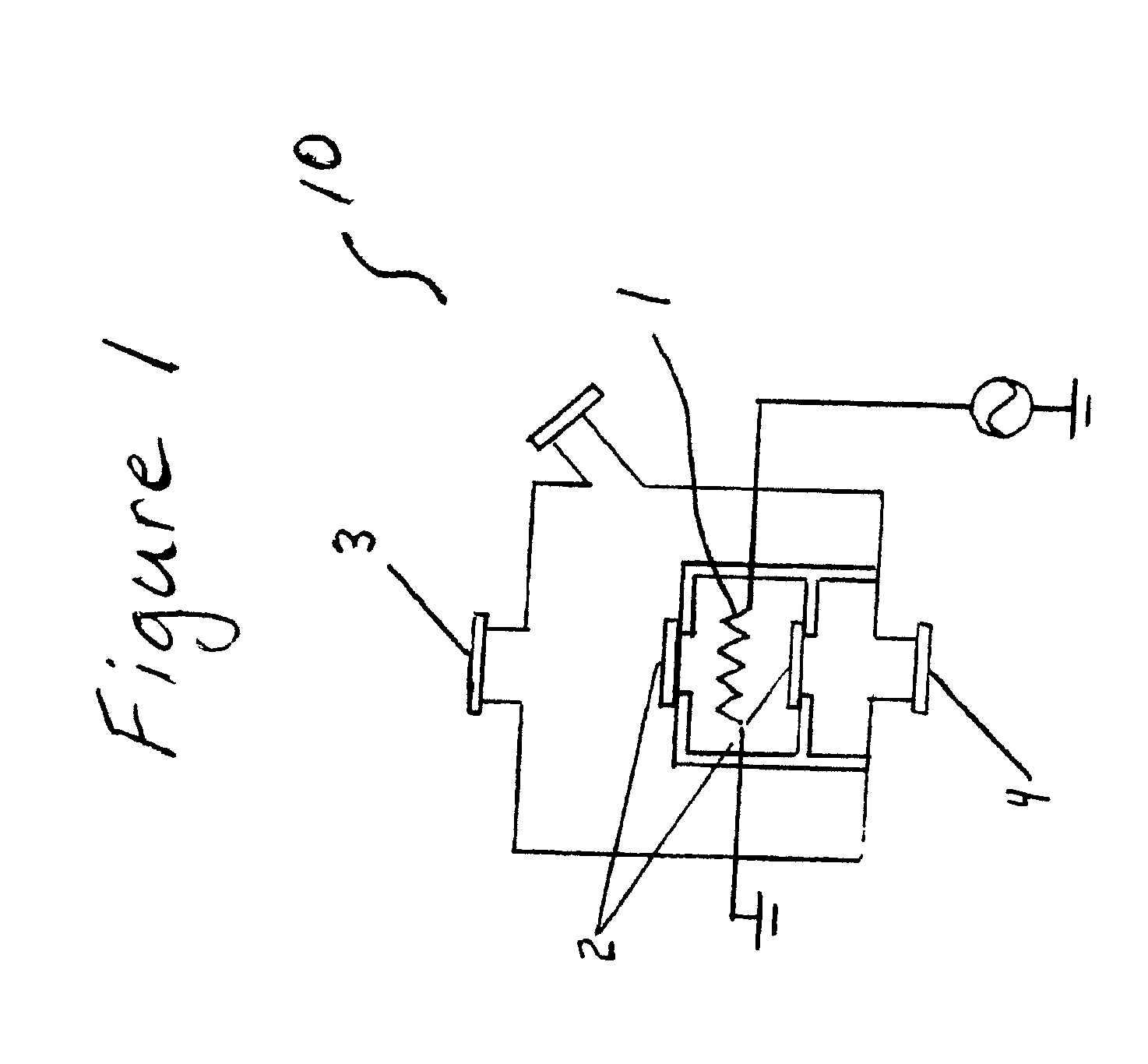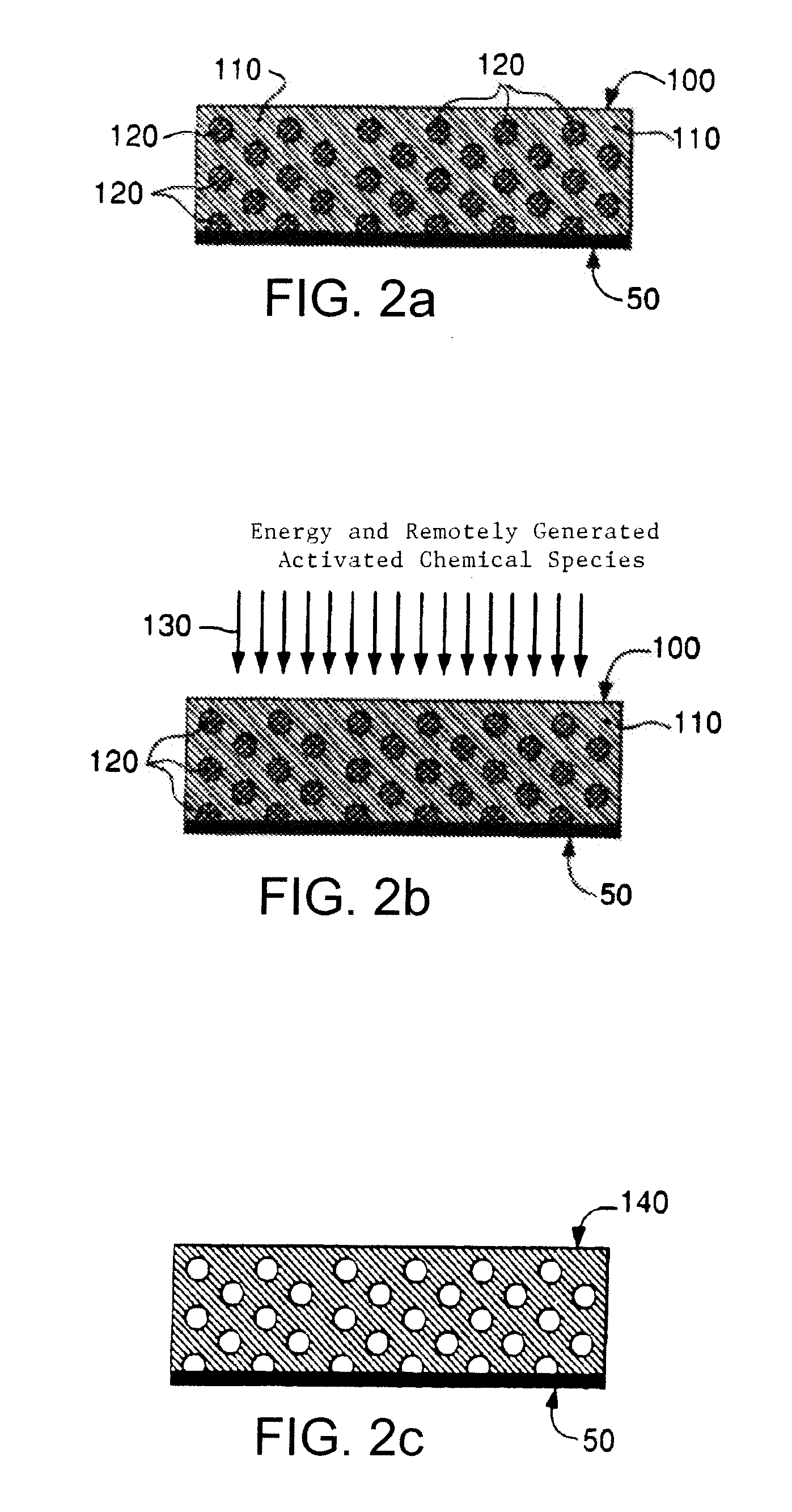Curing Dielectric Films Under A Reducing Atmosphere
- Summary
- Abstract
- Description
- Claims
- Application Information
AI Technical Summary
Benefits of technology
Problems solved by technology
Method used
Image
Examples
example 1
[0099] Composite films were deposited onto a Si substrate using PE-CVD processing techniques. The composite film was exposed to the UV source as described in Example 1 for 5 minutes. After 5 minutes, the wafer was removed from the chamber and cleaned with oxygen in the presence of UV light for 10 minutes to remove porogen from the window. After purging the chamber with helium, the sample was re-introduced into the chamber and exposed to UV light for an additional 8 minutes under a helium purge (250 sccm He flow rate, chamber pressure of 2 Torr) at 400° C. The chamber was subsequently cleaned with oxygen in the presence of UV light for an additional 5 minutes. The dielectric constant of the film was 2.5, refractive index of 1.36, and an extinction coefficient at 240 nm of 0.032.
example 2
[0100] As illustrated in these examples, the concurrent exposure of composite films to an energy source and a remotely generated activated chemical species effectively and efficiently removes the porogen component of the composite film.
[0101] Composite films are deposited onto a Si substrate using PE-CVD processing techniques as described above, film #1. An activated source of hydrogen is supplied to the UV chamber by a down stream microwave assisted plasma generator with an ion trap to significantly remove the ions from the gas stream. The following conditions are used for the downstream microwave plasma and UV chamber: [0102] Microwave plasma: 1.5 torr; 5000 sccm 5% H2 / He; temperature 350° C.; power 1500 watts [0103] UV source: 6000 watt broad band bulb (Fusion H+), 100% power, vacuum (
[0104] The samples are exposed to the combined activated hydrogen and UV light for 5 minutes with the platen in the UV chamber at 400° C. Upon exposure of the composite film, the porogen is signifi...
example 3
[0105] Composite films are deposited onto a Si substrate using PE-CVD processing techniques. An activated source of hydrogen is supplied to an e-beam chamber by a down stream microwave assisted plasma generator with an ion trap to significantly remove the ions from the gas stream. The following conditions are used for the downstream microwave plasma and e-beam chamber:
[0106] 1.5 torr; 5000 sccm 5% H2 / He; temperature 350° C.; power 1500 watts
E-beam Source: [0107] accelerating voltage 4 KeV, amperage 3 mA, 1000 μC dosage, 400° C.
[0108] The samples are exposed to the combined activated hydrogen and e-beam with the platen in the chamber at 400° C. until the dosage reached 1000 μC. Upon exposure of the composite film, the porogen is significantly removed from the film resulting in films with a dielectric constant of 2.5, refractive index of ˜1.3, and an extinction coefficient at 240 nm of 1×10−4 or less. The use of activated species also increases the rate of porog...
PUM
| Property | Measurement | Unit |
|---|---|---|
| Fraction | aaaaa | aaaaa |
| Percent by atom | aaaaa | aaaaa |
| Percent by atom | aaaaa | aaaaa |
Abstract
Description
Claims
Application Information
 Login to View More
Login to View More - R&D
- Intellectual Property
- Life Sciences
- Materials
- Tech Scout
- Unparalleled Data Quality
- Higher Quality Content
- 60% Fewer Hallucinations
Browse by: Latest US Patents, China's latest patents, Technical Efficacy Thesaurus, Application Domain, Technology Topic, Popular Technical Reports.
© 2025 PatSnap. All rights reserved.Legal|Privacy policy|Modern Slavery Act Transparency Statement|Sitemap|About US| Contact US: help@patsnap.com


